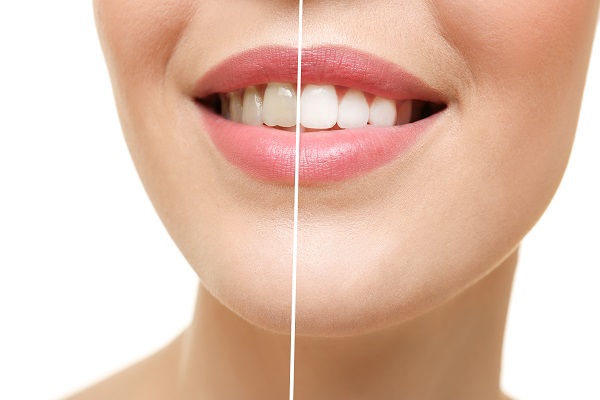How Often Can I Get Teeth Whitening Done?

Professional in-office teeth whitening offers a unique way to improve your smile. If you are not happy with your teeth due to a color shade that is not as white as you would like, in-office teeth whitening may be an appropriate solution for you, and learning more about the treatment option can help you make an informed decision.
Teeth whitening for a better smile
How long the results last and how often you can get teeth whitening depends on several factors, including the status of your oral health and how well you care for your teeth. The following is a review of professional, in-office teeth whitening with insights into how often you can receive in-office treatment.
What is in-office teeth whitening?
Teeth whitening involves using a bleaching agent to whiten teeth that are either stained or have naturally faded away from the desirable white shade. There are two types of professional teeth whitening, which are in-office whitening and take=home professional kits. In-office teeth whitening involves polishing the teeth, isolating the visible surface of teeth from the gums and applying a bleaching agent. The dental visit for teeth whitening typically only takes a day, and it is safe and does not have many risks.
When to consider teeth whitening
Anyone who would like to achieve a more attractive smile by brightening the shade of their teeth can benefit from professional teeth whitening. Dentists may recommend patients with cavities or weakened enamel strengthen their teeth and fill enamel decay before the teeth whitening procedure to minimize teeth sensitivity and pain. However, dentists can build teeth whitening into any treatment plan, regardless of the condition of the patient’s health, although the oral health concerns of the patient often come first.
How often teeth whitening is recommended
Most dentists recommend teeth whitening annually. The results for some patients last for more than a year, depending on how well they care for their smile at home, so not all patients require annual teeth whitening. The best way to determine how often you should schedule a teeth whitening visit is to discuss the treatment with a general dentist. They can put together a treatment plan to keep your smile healthy and looking great throughout each year.
In-office whitening vs. a take-home kit
In-office whitening involves the dentist safely isolating the gums and applying the bleaching agent to teeth. Take-home kits are sent home with the patient and the treatment is conducted at home. In-office whitening lasts longer on average and is much safer, whereas take-home kits are less reliable and need to be done more often. Nevertheless, there are effective take-home kits that are available, so be sure to talk to your dentist about all available whitening options to decide which is best for you..
Learn more about in-office teeth whitening
Give us a call today to set up a dental visit with our experienced team. We enjoy helping our patients achieve their ideal smile, and we offer in-office teeth whitening in addition to other cosmetic and oral health services.
Are you considering teeth whitening in the Miami area? Get more information at https://www.relaxandsmile.com.
Check out what others are saying about our dental services on Yelp: Teeth Whitening in Miami, FL.
Related Posts
You might be considering choosing either a take-home teeth whitening kit or having a dentist perform the in-chair procedure. The results will depend on the treatment you choose. They also depend on the degree of dental staining you have. If you want to know which teeth whitening procedure you should get, here are the details.Brown…
Teeth whitening trays are effective and convenient options for achieving a brighter smile. In-office whitening is efficient in making teeth whiter. Both procedures bring results. Understanding them well can help you decide which treatment is for you. If you want to know more about in-office and take-home teeth whitening trays, here are the details.It is…
The American Dental Association notes that multiple surveys show that patients are interested in teeth whitening. Whitening is one of the most requested cosmetic dental treatments. This simple procedure can remove years of staining and discolorations from teeth, giving them a brighter and more youthful appearance.The over-the-counter market is flooded with whitening products, and patients…
While tooth pain can vary in severity and sensation, general dentists can determine the source, provide treatment, and ensure the patient has everything they need to maintain their oral health. The causes of tooth pain can vary and often result in patients trying to treat it by themselves. However, when the pain is consistent, the…
